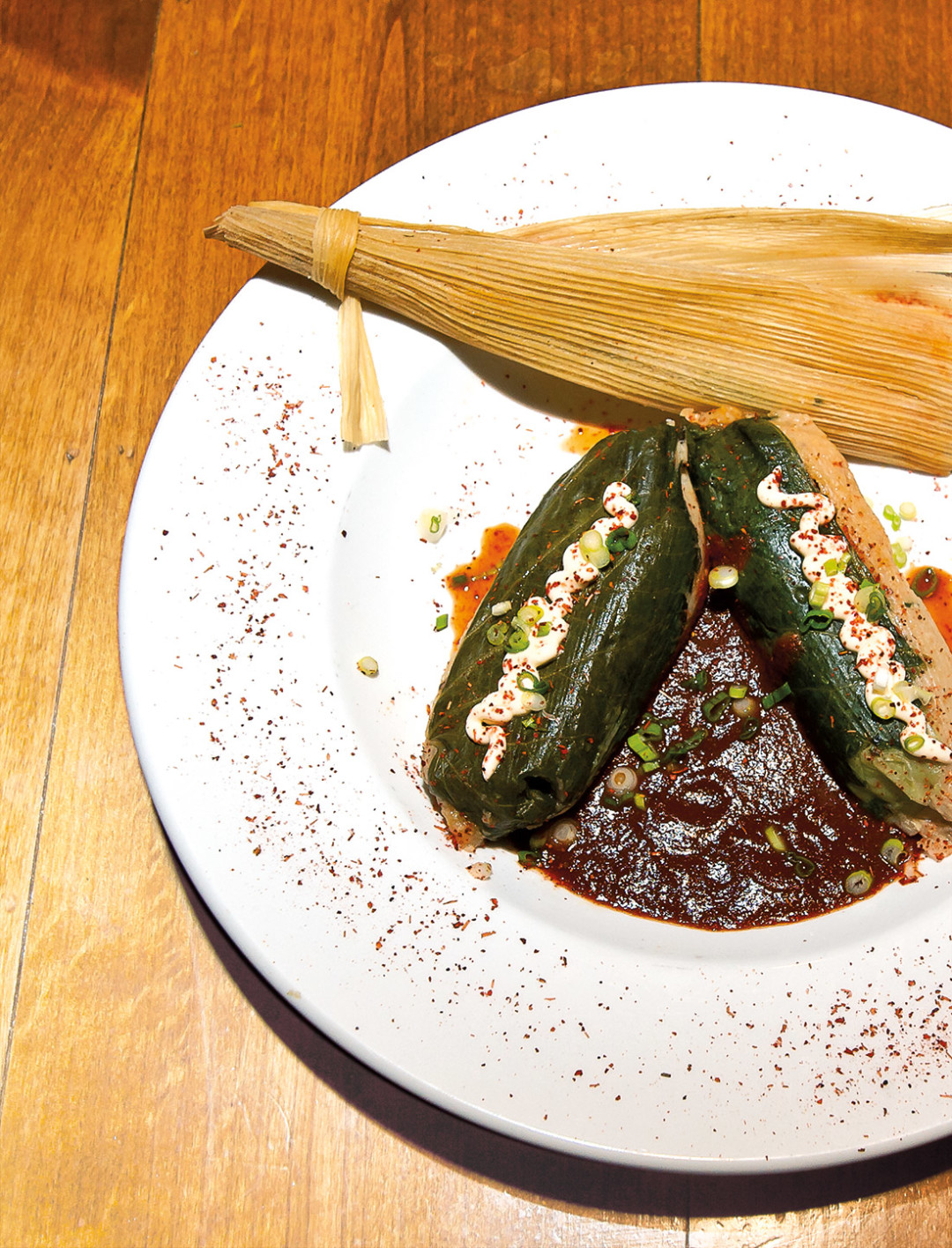Time to Make the Masa

Image: Matt Suby
Michael Beary’s hunt for rare chile peppers—back-road dealings with Oaxacan farmers who have little incentive to continue growing a crop their brethren can no longer afford—reads like a high-stakes game of cat and mouse. Yet every spring and fall the chef-proprietor of Zocalito Latin Bistro ventures south to acquire thousands of pounds of chilhuacles, taviches, pasillas, chilcosles, and more, dehydrating the harvest on-site for eight to twelve hours in 100-pound batches before exporting it all back to Aspen.
The mole Beary makes from these peppers—along with dozens of different exotic ingredients, following Mesoamerican tradition dating to 5000 B.C.—is but one element of his restaurant’s best-selling tapa: slow-cooked chicken tamales wrapped in santa leaf ($18). Last year, to further elevate his process’s authenticity, Beary fetched a Mexican Molino, a giant machine that grinds corn into nixtamal, a type of masa infrequently used anymore for tamales and tortillas in Mexico, let alone in the U.S., due to its painstaking process. (Beary likens cheap, pervasive masa harina to boxed mashed potatoes.) The chef’s timeworn tamale construction is epic:
1. First, 4 pounds of organic, GMO-free kernels are cooked with 12 cups of water and 2 ounces calcium hydroxide for 90 minutes, then soaked 24 hours. A final rinse strips tough outer hulls for easier digestion—and velado: hominy.
2. Enter the Molino, as big as a Zocalito bar table and with 4-inch-thick, 5-pound grinding stones. Homemade chicken stock helps turn the corn to a superfine paste over 1 hour. (This nixtamal masa* could create tortillas, which Beary hopes to try soon.)
3. To make tamale dough, nixtamal is whipped with gusano (maguey worm) and chicatana (giant winged ant), salt, baking powder, and more chicken stock for 30 minutes. Frozen fresh lard lends body.
4. Now, the filling: 3 whole chickens are floured, fried, and cooled. Meat is shredded; crispy skin chopped superfine. Both simmer with chicken stock, onions, lots of garlic, tomatoes, spices, more gusano salt, and taviche mole, for 8 hours, until reduced. Each batch of filling produces 100 tamales.
5. Corn husks soak in preparation for tamale assembly.
6. Half of a homegrown, anise-scented hoja santa shrub leaf tops each rehydrated corn husk.
7. Using wet hands, a ball of tamale masa is spread a quarter-inch-thick down the center and topped with chicken filling. Leaf and husk are rolled, folded, and tied into a neat, oblong package with a ribbon of corn husk.
8. Tamales steam over a bed of corn husks for 75 minutes.
9. Order in! Tamales are unwrapped, set in a pool of taviche mole, and drizzled with crema Mexicana.













































